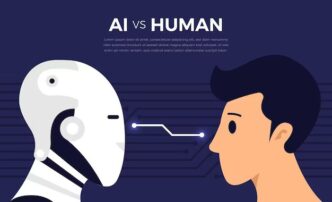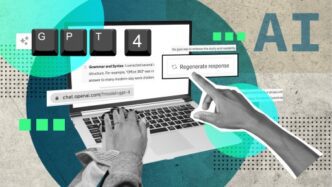Medicaid, the lifeline for over 83 million low-income Americans, is now at the center of a political firestorm. With Republican lawmakers proposing an $880 billion cut over the next decade—a move that would shrink the program’s budget by 10%—concerns are mounting over what this means for patients, especially seniors and people with disabilities. As these cuts loom, a growing number of experts believe that artificial intelligence (AI) could play a critical role in softening the blow and maintaining care quality.
One of the biggest challenges Medicaid faces is skyrocketing healthcare costs. But now, AI in Medicaid is being recognized as a powerful tool that can curb these expenses while still delivering better outcomes. Today, predictive analytics powered by AI can flag high-risk patients long before they land in the emergency room, enabling early interventions.
Grace Chang, CEO and founder of California-based healthtech startup Kintsugi, believes AI is key to unlocking efficiency. “With Medicaid facing budget constraints, AI can reduce costs without sacrificing quality,” she said. According to Chang, many operational inefficiencies—missed diagnoses, poor follow-ups—go unnoticed but come at a massive cost. AI, she argues, can detect patients who are likely to overuse emergency services or neglect their medication, areas that bleed billions from the system yet are solvable with the right tools.
Kintsugi is pioneering the use of voice biomarkers to detect early signs of depression and anxiety, cutting down clinician time spent on assessments. In a healthcare landscape already stretched thin, tools like these help providers focus on patients who need immediate care.
Chang’s warning is clear: failing to adopt AI doesn’t just slow progress—it widens care gaps. “The risk isn’t just inefficiency. It’s missing the opportunity to improve outcomes for those who need help the most.”
AI’s Growing Role in Cutting Healthcare Costs
The financial strain on Medicaid is no secret, and administrative inefficiencies are a major part of the problem. According to a National Center for Biotechnology Information (NCBI) study, AI could help the U.S. healthcare system save up to $150 billion annually. Similarly, the National Bureau of Economic Research projects even higher savings—between $200 billion and $360 billion—over the next four years thanks to automation.
So how exactly is AI in healthcare making a difference? From forecasting disease outbreaks and demographic shifts to optimizing how resources are allocated, AI enables a proactive, data-driven approach. It’s also improving predictive analytics, helping doctors anticipate patient outcomes and develop tailored treatment plans. Personalized medicine, once a distant dream, is now within reach through AI-powered insights.
Startups are leading the charge to bring these innovations into Medicaid systems. In Boston, Quantivly is using AI to increase the efficiency of MRI and CT scans. By pinpointing bottlenecks in radiology workflows, their platform helps hospitals reduce patient wait times, maximize machine usage, and boost revenue—all without burdening their overworked staff.
“Health systems, especially those supporting Medicaid patients, are being told to do more with less,” said Robert MacDougall, co-founder of Quantivly. “AI in medical imaging isn’t about replacing workers—it’s about managing throughput better.”
He emphasized how existing scheduling systems overlook critical factors like scanner types, patient mobility, and sedation requirements. Coordinating all these variables manually is nearly impossible, but AI can juggle them in real time, optimizing scan times and resource allocation.
Smarter Medication Management Through AI
Another key area where AI is making waves is medication management. Platforms like Arine are helping providers prevent prescription errors and improve drug regimens. Arine’s CEO, Yoona Kim, highlights how AI can connect dots across massive datasets—from patient histories to clinical research—delivering highly personalized drug recommendations.
“Imagine a patient being prescribed a new medication that negatively interacts with an existing condition. AI can flag that immediately and prevent an ER trip,” Kim explained. Beyond error prevention, AI can also automate repetitive tasks like documentation, giving clinicians more time to focus on patient care.
However, Kim underscores the need to keep clinicians in the driver’s seat. “AI should support decision-making, not replace it,” she said. This balance between automation and human oversight is critical to preserving care quality while scaling efficiency.
Will AI Become a Priority or Fall Victim to Budget Cuts?
With potential savings in the billions and clear benefits to patients and providers, AI seems like a no-brainer. But whether lawmakers will embrace AI as a solution—or allow political gridlock to stall progress—remains an open question.
MacDougall believes AI isn’t about cutting corners—it’s about boosting access. “If we can scan more patients with the same equipment, without exhausting our staff, that’s real productivity,” he said. Especially in under-resourced communities, this kind of operational uplift can be the difference between timely care and long waitlists.
As the debate over Medicaid funding heats up, one thing is clear: AI in Medicaid isn’t just a tech trend—it could be a lifeline.













